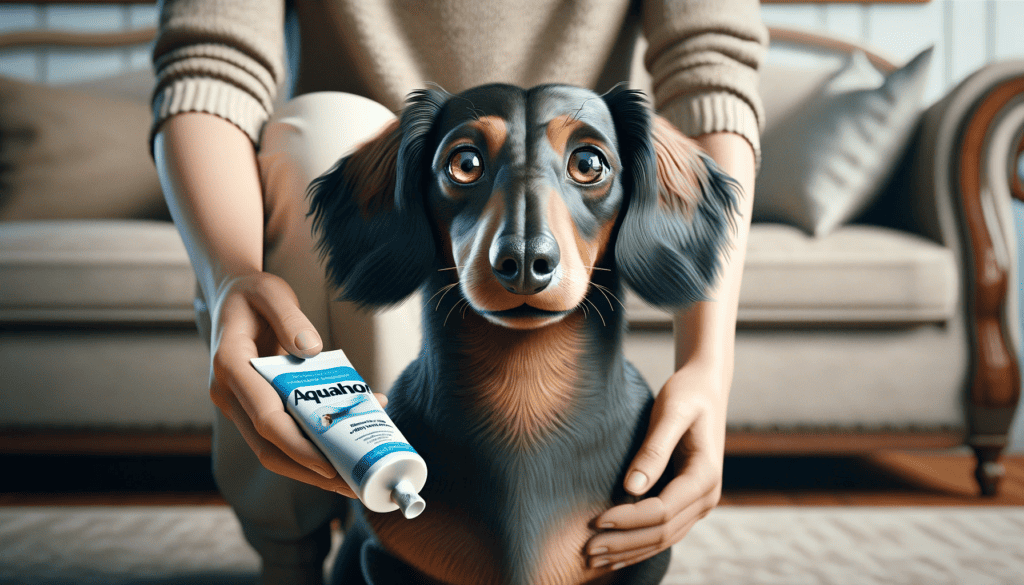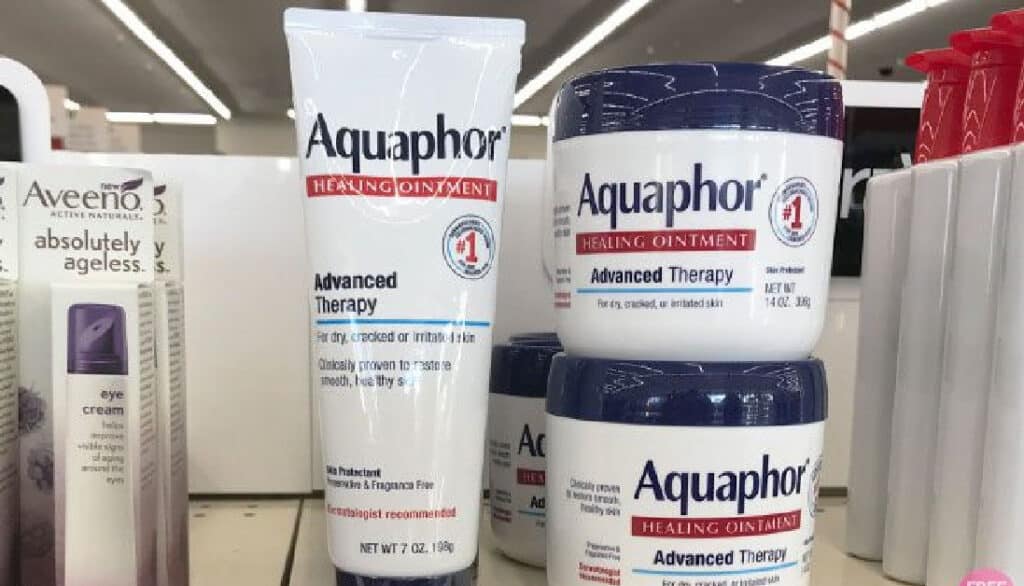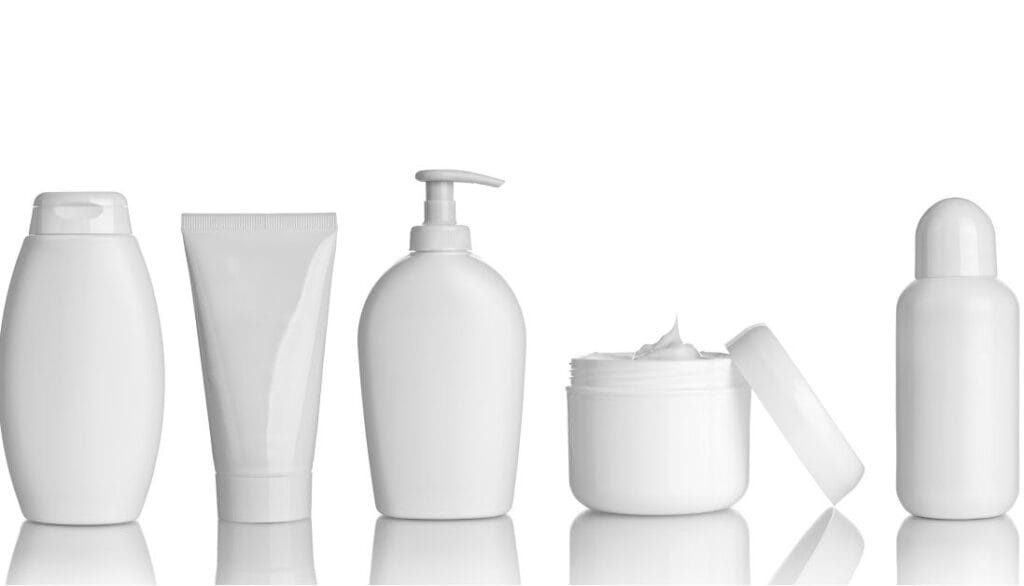As devoted pet parents, we all want the best for our furry companions, especially when it comes to their health and comfort. Just like us, our four-legged friends occasionally suffer from skin irritations, dry patches, or minor injuries. Naturally, we’re tempted to reach into our own medicine cabinets to offer relief. One product that’s been getting some buzz among dog owners is Aquaphor. Traditionally a go-to for human skin ailments, its potential as a pet remedy has raised eyebrows and questions alike. Is it safe? Effective? Or just another trend that could potentially harm our pets?
Navigating the vast world of pet skin care can be daunting, but don’t worry; we’re here to help. In this guide, we’ll delve deep into the topic, weighing the pros and cons of using Aquaphor on dogs and exploring safe alternatives. Let’s embark on this journey of ensuring our pets remain comfortable, healthy, and happy.

What is Aquaphor?
Aquaphor is a popular ointment often found in household medicine cabinets and is renowned for its multi-purpose applications. At its core, it’s designed to soothe, protect, and heal the skin. Let’s delve deeper into its components and how they function:
- Petrolatum: This is the primary ingredient in Aquaphor, making up about 41% of the formula. Also known as white petroleum jelly, petrolatum acts as a skin protectant, creating a barrier that helps to retain moisture and aid in the healing of minor cuts, burns, and dry skin.
- Mineral Oil & Ceresin: Both serve as skin conditioning agents, working together to enhance the skin’s smooth texture.
- Lanolin Alcohol: This is a fatty alcohol derived from wool-bearing animals like sheep. It’s an emollient that helps soften and smooth the skin, preventing moisture loss.
- Panthenol & Glycerin: Both of these ingredients are humectants, which means they attract moisture. They aid in hydrating the skin and promoting faster healing.
- Bisabolol: Extracted from the chamomile plant, bisabolol acts as a skin-soothing agent, reducing redness and irritation.
Given its formulation, it’s easy to see why Aquaphor is favored for a plethora of skin issues in humans. The ointment provides a protective barrier, locks in moisture, and aids in the skin’s natural healing process. But the question remains: can this popular human remedy translate effectively and safely to our canine companions? Read on as we unpack the potential benefits and concerns of using Aquaphor on our beloved pets.

Common Skin Issues in Dogs
Every dog owner has, at some point, witnessed their furry friend itching, licking, or showing signs of skin discomfort. Our dogs, just like us, can be susceptible to a variety of skin issues. Understanding these can aid in more effective care and treatment. Here are some of the most common skin issues dogs face:
- Allergies: Dogs can develop allergies to a range of substances including certain foods, dust mites, pollen, or even specific shampoos. Allergic reactions often manifest as itching, redness, and inflammation on the skin.
- Fleas, Ticks, and Mites: External parasites can be a significant source of discomfort. The bites from these pests can lead to itching, inflammation, and even secondary bacterial infections if the skin becomes broken from excessive scratching.
- Dermatitis: This is an inflammation of the skin that can be caused by a variety of factors including contact with irritants, environmental conditions, or underlying health issues.
- Dry or Flaky Skin: Just as humans suffer from dry skin, especially in colder months, dogs can also experience dryness and flakiness. This condition can make them itch and can be a sign of nutritional deficiencies or environmental factors.
- Fungal and Bacterial Infections: These can arise due to moisture (especially in breeds with skin folds), minor injuries, or a compromised immune system. Symptoms might include sores, crusty skin, and a distinct odor.
- Hot Spots (Acute Moist Dermatitis): These are red, moist, inflamed patches of skin that can appear suddenly. They’re painful and itchy, often leading dogs to bite, lick, or scratch the area, worsening the condition.
Understanding the root cause of a skin issue is crucial. While some conditions might benefit from the soothing properties of products like Aquaphor, others might require more specific treatments or veterinary care.

The Good: Benefits of Using Aquaphor on Dogs
As pet owners, our prime concern is the welfare and comfort of our furry companions. Given Aquaphor’s popularity in human skincare, it’s no surprise many are curious about its potential benefits for dogs. Here’s why some dog owners and vets might lean towards using Aquaphor for pet skin care:
- Moisturizing Properties: Just as it aids in human skin hydration, Aquaphor can help to alleviate dry or flaky patches on dogs. Its main ingredient, petrolatum, creates a protective barrier that locks in moisture, providing relief for parched skin.
- Wound Protection: Minor cuts, scrapes, or abrasions can benefit from Aquaphor’s protective qualities. It can act as a barrier against external irritants, helping wounds heal without getting infected or aggravated.
- Safe for Sensitive Skin: Due to its mild formulation devoid of many common irritants like fragrances or dyes, Aquaphor is often well-tolerated, even on dogs with sensitive skin.
- Relief from External Irritants: If your dog has been exposed to elements that cause skin irritation – say, a particular type of grass or an irritating substance – a thin layer of Aquaphor can soothe the affected area.
- Natural Ingredients: With ingredients like panthenol and bisabolol, which are known for their skin-soothing and hydrating properties, Aquaphor is often preferred over products that contain harsh chemicals.
- Versatility: From paw pads to noses, Aquaphor can be applied to various parts of a dog’s body, making it a versatile addition to a pet owner’s toolkit.
While these benefits paint a positive picture, it’s essential to balance them with caution. Dogs, unlike humans, might ingest products they can reach, either from their skin or directly from the container. Moreover, what works for one dog might not necessarily be suitable for another.

The Caution: Potential Concerns and Side Effects
While Aquaphor offers numerous benefits, it’s crucial for dog owners to be aware of the possible side effects and concerns associated with its use on our furry companions. Informed decisions are the best decisions, especially when it comes to pet care. Here are some potential issues to consider:
- Ingestion Risk: One of the primary concerns with applying Aquaphor on dogs is the risk of ingestion. Dogs are known to lick unfamiliar substances off their skin, which might lead to them consuming a significant amount of the product. While Aquaphor isn’t necessarily toxic, consuming large amounts can cause digestive upset or, in rare cases, an intestinal blockage.
- Petrochemical Concerns: Petrolatum, the primary ingredient in Aquaphor, is a petrochemical. While it’s considered safe for topical application, some pet owners and experts have concerns about its long-term effects, especially if ingested.
- Allergic Reactions: Even though Aquaphor is generally mild, there’s always a possibility of an allergic reaction. Symptoms might include increased itching, redness, swelling, or the development of a rash.
- Respiratory Irritation: Dogs with pre-existing respiratory conditions might find the thick consistency of Aquaphor challenging, especially if applied near the nose. It might hinder comfortable breathing.
- Interference with Natural Healing: While Aquaphor can act as a protective barrier, it might also trap bacteria or other harmful agents in wounds, potentially hindering the natural healing process or leading to infections.
- Greasy Residue: Aquaphor can leave a greasy residue that might attract dirt or other particles, potentially leading to clogged pores or additional skin irritations.
While Aquaphor might be beneficial in some instances, it’s essential to apply it with caution. Always monitor your dog after application, ensure they’re not consuming it, and consult with a veterinarian if you notice any adverse reactions or if you’re uncertain about its use.

Tips for Safely Applying Aquaphor on Dogs
If you’re considering using Aquaphor to address your dog’s skin issues, it’s crucial to do so with care. Adopting safe practices can help maximize the benefits while minimizing potential risks. Here are some expert-recommended tips for safely using Aquaphor on dogs:
- Patch Test First: Before fully committing to an application, try a small amount on a patch of your dog’s skin. Monitor for any adverse reactions like redness, swelling, or increased itching over 24 hours.
- Limit Licking: Dogs are curious creatures and might try to lick off anything applied to their skin. To prevent ingestion, distract your dog post-application – perhaps with a toy or treat. Consider using a protective collar if necessary.
- Apply Thin Layers: A little goes a long way. Apply a thin layer of Aquaphor to ensure it’s effective without becoming overly greasy or messy.
- Clean the Area First: Before applying Aquaphor, especially on wounds or irritated areas, make sure the skin is clean. This prevents trapping dirt or bacteria beneath the ointment.
- Avoid Sensitive Areas: Be cautious when applying near the eyes, nose, or mouth. Inhalation or ingestion could lead to complications.
- Regularly Monitor: Always keep an eye on the treated area after application. If you notice worsening conditions or any signs of infection, discontinue use and consult a veterinarian.
- Wash Your Hands: After applying Aquaphor, ensure you wash your hands to prevent any unintentional transfer to areas where it’s not intended (like your dog’s eyes).
- Store Safely: Always keep Aquaphor and other similar products out of your pet’s reach to prevent accidental ingestion.
Remember, while Aquaphor can be a beneficial addition to your dog’s skincare arsenal, it’s not a cure-all. Regular check-ups with your vet are vital to ensure your dog’s overall well-being and address any underlying health concerns.

Alternatives to Aquaphor for Dogs
While Aquaphor has its merits, it’s always beneficial to be aware of alternative products or remedies, especially those designed explicitly for canine skin care. Here are some notable alternatives:
- Veterinary Ointments and Creams: There are numerous products formulated specifically for dogs that veterinarians often recommend. These are tailored to address canine skin issues, ensuring both safety and effectiveness.
- Coconut Oil: Known for its moisturizing and anti-inflammatory properties, coconut oil can be a natural remedy for dry skin or minor irritations. Ensure you’re using organic, cold-pressed coconut oil and always start with a small amount to gauge your dog’s reaction.
- Calendula Cream: Calendula, derived from marigold flowers, has natural anti-inflammatory and healing properties. It’s often used in natural creams or ointments for skin irritations or minor wounds.
- CBD-infused Balms: With the rise in popularity of CBD for pets, some companies now offer CBD-infused balms or ointments that can help with skin issues and inflammation. Always consult your vet before trying new products, especially those with active compounds like CBD.
- Pet-specific Lotions: Several brands design moisturizers and lotions specifically for pets, which can be ideal for addressing dry skin or flakiness without the risks associated with human products.
- Witch Hazel: An organic astringent, witch hazel can help with minor skin irritations or itching. Ensure it doesn’t contain alcohol, as this can dry out the skin further.
- Chamomile Tea Rinse: Chamomile has natural soothing properties. Brewing a chamomile tea and allowing it to cool, then using it as a rinse, can help alleviate skin irritations.
Remember, while exploring alternatives is beneficial, the suitability of a product varies from one dog to another. Individual needs, allergies, and sensitivities should be considered, and consulting a veterinarian before introducing a new skincare product or remedy is always recommended.

Conclusion
The world of pet care is vast and ever-evolving, with products like Aquaphor sparking discussions among dedicated dog owners searching for the best for their furry companions. While Aquaphor has several merits in soothing and protecting our dog’s skin, it’s equally essential to tread with caution, given the unique physiology and behavior of our canine friends.
However, Aquaphor is just one of many tools in the expansive toolbox of pet skincare. Whether you opt for this product, its alternatives, or a combination of remedies, the key lies in informed decision-making, observation, and consultation. Every dog is unique, and their well-being often relies on a blend of tried-and-true solutions, vet advice, and the intuitive care only a loving owner can provide.
In this journey of ensuring our dogs have healthy, comfortable skin, we’re reminded of the profound bond we share with these creatures. Their well-being becomes our mission, and in return, they gift us with unconditional love and loyalty. So, as you navigate the terrain of pet skincare, remember to cherish each moment, each wag, and each nuzzle – for in the end, it’s this shared journey of love and care that truly matters.
Frequently Asked Questions
While Aquaphor isn’t necessarily toxic to dogs, ingestion in large quantities can cause digestive upset. It’s essential to monitor your dog after application to ensure they’re not licking or consuming the product.
Yes, Aquaphor can be applied to a dog’s paws, especially if they’re dry or cracked. Its moisturizing properties can provide relief. However, ensure that your dog doesn’t lick it off immediately after application.
The frequency of application depends on the specific issue you’re addressing and how your dog reacts to the product. For minor irritations or dry spots, applying once a day might suffice. For more severe issues, consult your veterinarian for guidance.
No specific breed restrictions exist for using Aquaphor. However, individual dogs, regardless of breed, might have allergies or sensitivities. Always conduct a patch test first and monitor for any reactions.
While Aquaphor offers several benefits similar to products formulated for dogs, it’s originally designed for human use. Dog-specific products might be tailored to canine skin needs and might have fewer risks of side effects or complications. Consulting with a vet can provide clarity on the best choice for your pet.
